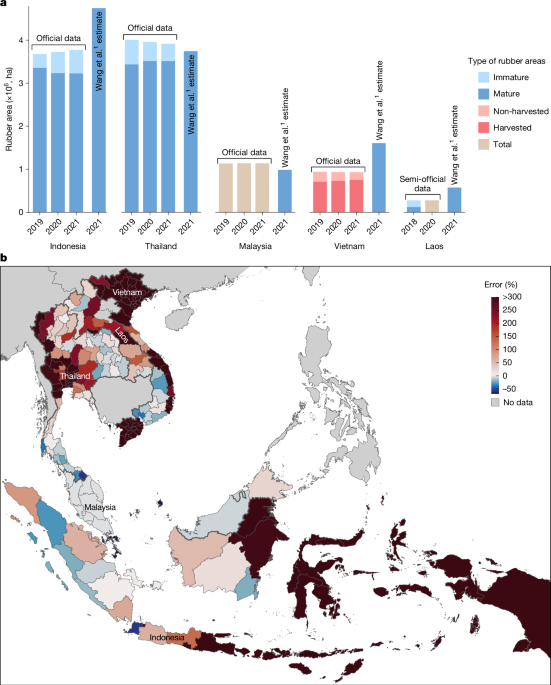a, Map of a site in Thua Thien Hue, Vietnam, showing Wang et al.’s rubber pixels overlaid on an ArcGIS Online basemap, highlighting correctly and incorrectly classified areas. The map was created using ArcGIS Desktop 10.8.2 software by Esri. The rubber map layer was adapted from Wang et al.1 (Springer Nature Limited) under a CC BY 4.0 licence. b, A field photograph taken in March 2023 using a Mavic 2 Enterprise Advanced, covering locations 1, 2, 3, and 4 identified in (a). Location 2 features defoliated immature rubber classified as mature rubber, while locations 1, 3, and 4, consisting of mature acacia and logged acacia (2022), are misclassified as rubber. c,d,e,f, Field photos from November 2019 captured by a Mavic 2 Pro, corresponding to locations 5, 6, 7, and 8 in (a). These photos illustrate misclassifications: acacia and a fragment of natural forest (top right) in (c), acacia in (d) and (f), and acacia mixed with native timber trees in (e), all incorrectly identified as rubber plantations in Wang et al.’s map. ArcGIS Online basemap sources: Esri, DigitalGlobe, GeoEye, i-cubed, USDA FSA, USGS, AEX, Getmapping, Aerogrid, IGN, IGP, swisstopo, and the GIS User Community.


